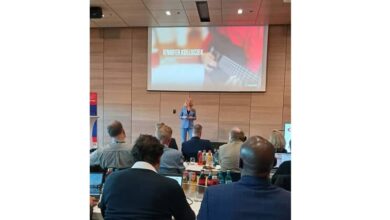Diversification Makes Commercial Sense With the Right Tech
Written by Ayman Aly, Senior Marketing Manager, Canon Middle East

According to our customers, applications diversification is a key route to their business growth, and the continuous development of digital print technologies, media and inks make it easier than ever to extend your product range and capitalise on wider trends such as mass customisation.
However, in typical signage and graphics businesses, expanding your product offering may make it challenging to print at consistently high quality across different types of media, while still controlling operating costs and maintaining an acceptable level of productivity.
To operate more efficiently, your technology line-up needs to be capable of supporting a varied work mix, made up of short runs of diverse products. To profit from the opportunity to expand your product portfolio, you need production solutions that allow you to switch seamlessly between media types and minimise the specific challenges that come with different substrates.
Turning up the heat
While the trend in applications diversification intensifies, established roll-to-roll printing technologies have not been able to meet the need for more versatile output devices with the capability to print at high quality on an extensive range of substrates.
The main reason for this lies in the fundamentals of evaporative technologies such as latex and eco-solvent, both of which need to dry the prints at high temperatures to remove the surplus water or solvent. The reality is that these technologies may heat the media to temperatures as high as 100 degrees Celsius, which can cause media deformation and distortion, affecting print quality, finishing, and ease of installation.
In particular, the high-temperature evaporative process makes these established technologies fundamentally unsuitable for heat-sensitive media, which in turn creates significant challenges with certain applications, such as films and self-adhesive. It also tends to rule out working with lower cost substrates, making it difficult to price certain work competitively.
This issue was a key consideration in the development of Canon’s UVgel technology. The result is a waterless, low-heat process that maintains the substrate between 28 and 36 degrees Celsius and cures the gel ink drops using LED rather than evaporative technology. This immediately unlocks new potential to work with inexpensive, uncoated media, enabling you to offer lower-cost applications for price-sensitive customers.
Diverse application mix
Diversification is also hindered if you cannot use a single digital print solution to produce multiple applications, due to the time taken to recalibrate the device for different media, and the downtime involved in constantly switching media rolls. In practice, many print service providers (PSPs) overcome this by running multiple roll-to-roll printers side by side, each earmarked for a specific application and media type.
However, this is far from ideal, tying up space and capital in equipment that is not productive at all times, reducing production efficiencies, complicating workflow management, increasing the burden on staff and elevating the cost and time involved in service and support. Some PSPs build a reputation for working with a particular range of materials and develop a loyal customer base due to their specialism. But with more adaptable technologies, they could potentially offer those repeat customers a broader portfolio of products, unlocking new revenue streams as a consequence.
High-performance prints
If you’re seeking to broaden your horizons into new products and markets, another critical consideration is that different applications have different functional requirements, which place further demands on printing and finishing. For example, indoor retail graphics such as banners, posters, and floor vinyl may need to handle physical knocks and abrasion; décor applications such as wall coverings need to be resistant to cleaning; and outdoor applications must withstand everything the elements can throw at them, from rain and wind to harsh UV light and temperature changes.
Using LED curing, UVgel technology requires no heat for drying (in contrast to evaporative technologies), so that even with highly heat-sensitive media, distortion is negligible, making the system ideal for applications needing high geometric accuracy, such as wallcoverings. Similarly, in our tests, UVgel has demonstrated better washability and abrasion resistance compared with latex and eco-solvent prints and, for outdoor applications, less colour fading compared with latex.
Many legacy roll-to-roll technologies produce prints that require additional lamination in order to be fully fit for purpose. While this solves the problem in a practical sense, it adds workflow complexity and cost and extends the turnaround time, especially when factoring in delays for drying or outgassing. In contrast, UVgel ink offers the productivity and cost advantages of being durable enough for use in many environments without additional lamination.
For indoor settings, prints must also comply with environmental requirements around odour and VOC emissions. Unlike solvent, eco-solvent and UV inks, UVgel is HAPS-free (Hazardous Air Pollutants). With ultra-low VOC content, it is also odourless and GREENGUARD Gold certified, making it suitable for wallcoverings, even in sensitive environments such as hospitals and schools.
No compromises
When investing in new digital print technology, it’s common to focus primarily on the productivity benefits, but adding production capacity with another print engine may have limited long-term benefits for your business if you are forced to compromise quality or if it still boxes you into producing a limited range of applications.
It’s worth looking more strategically at your shortlist of technologies and considering how much versatility they give you to handle a more diverse range of work and offer new services. If you weigh up the total productivity equation and also factor in quality, print performance, and applications range, you may find yourself leaning towards a different choice altogether, and one which opens the door to another level of business growth.




